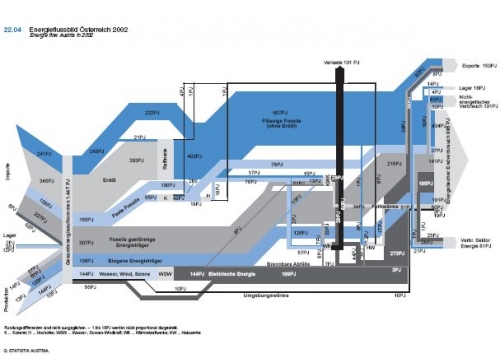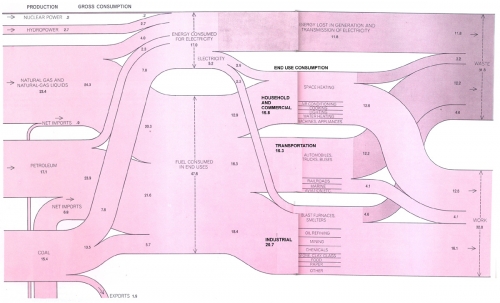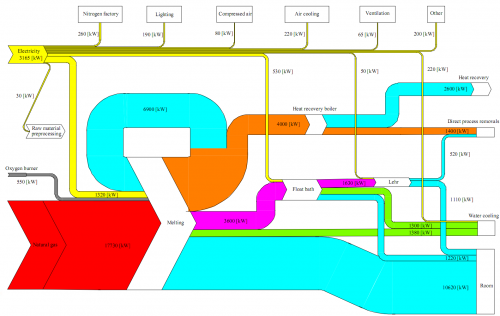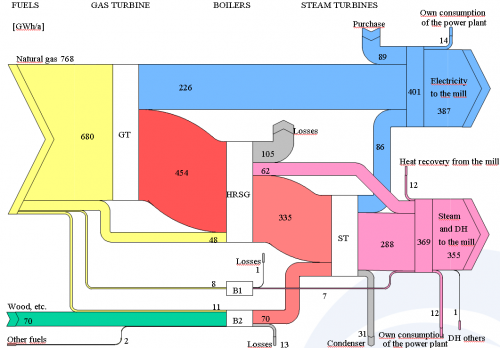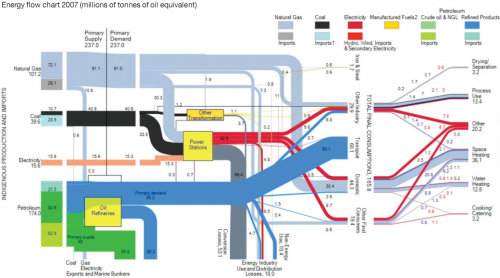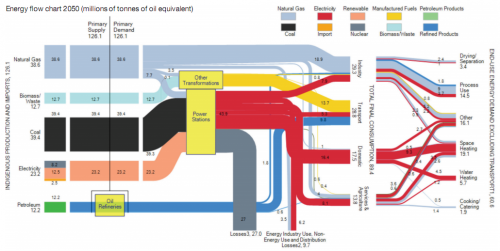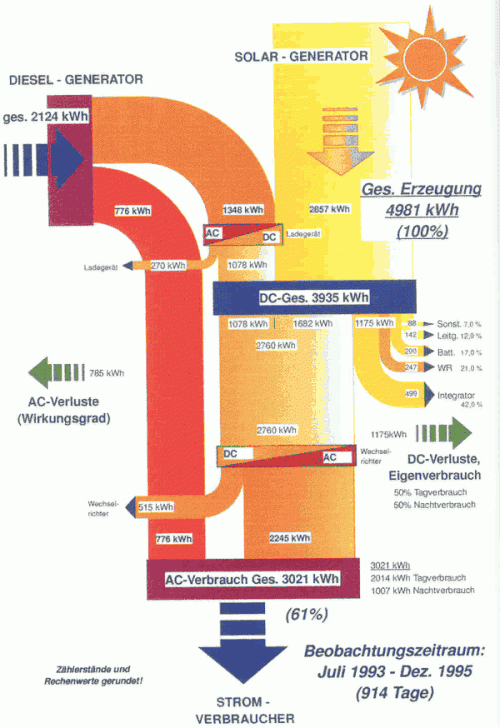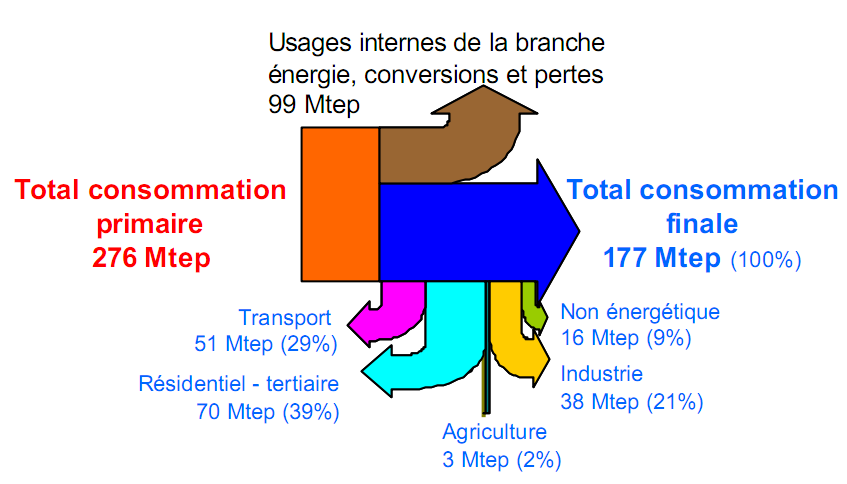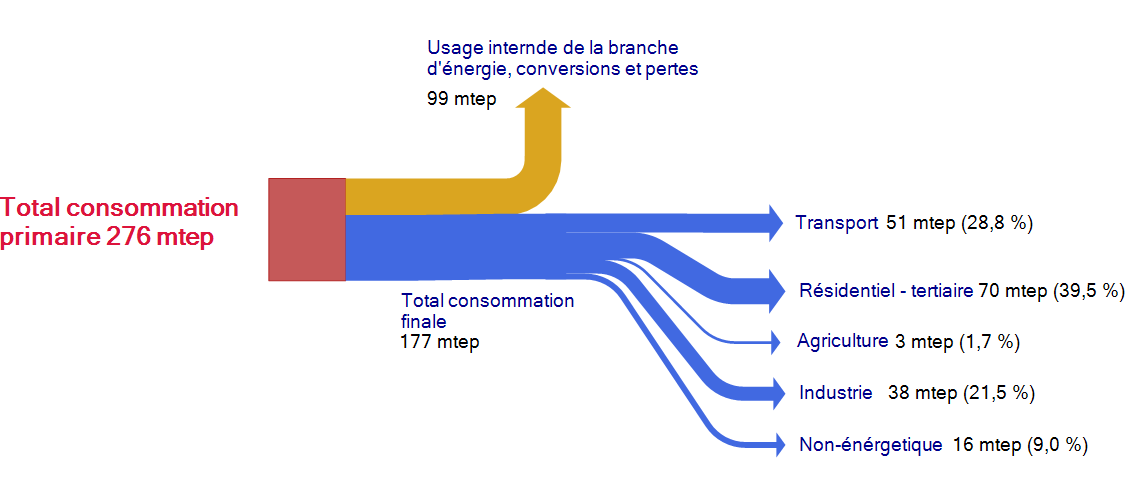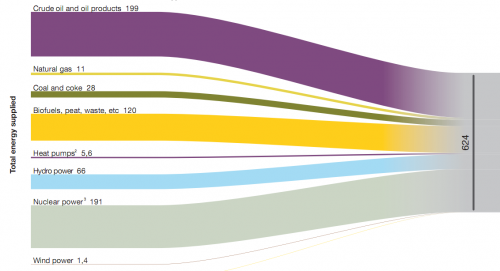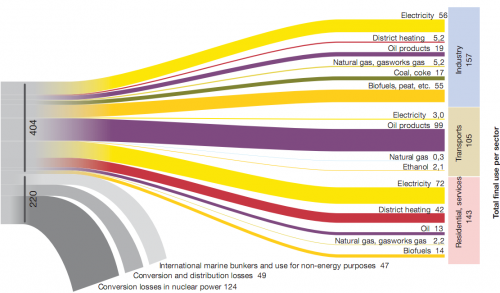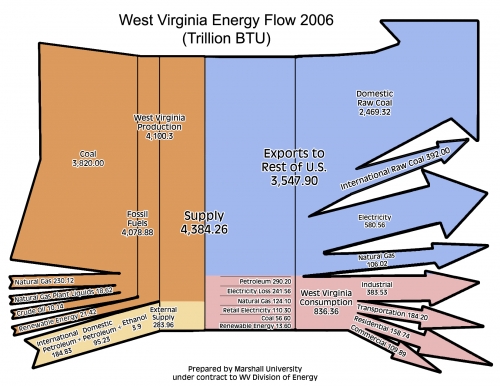Found this Sankey diagram displaying the energy flows in Austria in 2002 on a web page with didactic material from that country.
Unfortunately this copy of the diagram isn’t very large, and I have trouble reading and translating everything. Flows are in petajoule (PJ), source given is Statistics Austria.
On the left are imports, withdrawl from stocks, and domestic production. Losses branch off in black to the top. The diagram differs fundamentally from the ones I have presented for other coutries (such as for New Zealand, the United Kingdom, or the U.S.) in two ways:
First, it doesn’t show the energy use by sectors, but instead a breakdown by energetic end use (985 PJ), non-energetic end use (101 PJ), exports (150 PJ), stock increase (18 PJ), as well as energy use within the energy sector itself (81 PJ).
Second, the colors of the flows are used to differentiate between liquid fossil (dark blue), gaseous fossil (medium grey) and solid fossils (light bluegrey) rather than specific energy carriers. Furthermore biogenic energy flows are shown in medium blue, renewables in very light blue. Converted electric energy is in dark grey.
